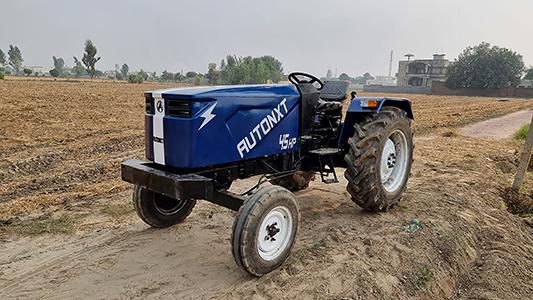In current years, electric powered motors (EVs) have emerged as a promising solution to reduce carbon emissions and combat climate trade. While lots of attention has been centered on electric motors for city commuting, the realm of off-street cars provides an awesome set of challenges and possibilities for electric powered powertrains. Off-road fanatics are an increasing number of turning to electric cars for their adventures, drawn by way of their environmental friendliness, instantaneous torque shipping, and quiet operation.
However, designing electric powertrains for off-street use calls for a specialized method tailored to the needs of difficult terrain, severe conditions, and extended utilization. In this article, we explore the particular issues and improvements in electric powered powertrains for off-street programs, highlighting the differences from their on-street opposite numbers.
Challenges of Off-Road Terrain: Off-street environments pose a myriad of demanding situations that demand strong and flexible powertrains. Unlike easy highways, off-street trails can include rocky paths, steep inclines, dust pits, and uneven surfaces. Traditional internal combustion engines, while powerful, frequently battle with offering regular torque and manipulate in these conditions. This is in which electric powertrains step in, supplying remarkable control, immediately torque, and more suitable manoeuvrability.
Instant Torque for Off-Road Dominance: One of the maximum exceptional capabilities of off-avenue electric powertrains is the instant shipping of torque. Unlike internal combustion engines that want to rev up, electric automobiles provide maximum torque from the moment they start. This feature is a sport-changer whilst tackling challenging terrains, allowing off-avenue electric automobiles to effortlessly navigate obstacles and ascend steep gradients with confidence.
Power Delivery and Torque Management: Off-road environments demand strong power transport and particular torque management to navigate via limitations such as steep inclines, rocky terrain, and deep mud. Unlike conventional internal combustion engines (ICE), electric cars provide instantaneous torque, providing immediately response and superior traction. Off-road electric powered vehicles frequently utilize more than one cars, each independently managed, allowing superior torque vectoring for foremost traction and stability. This dispensed powertrain structure enhances agility and manoeuvrability, allowing off-road EVs to overcome hard terrain conveniently.
Modular Design and Customisation: Off-road electric powered powertrains are designed with modularity and customization in thoughts. Manufacturers recognize the numerous desires of off-street fans and offer powertrain configurations that may be tailor-made to specific packages. This adaptability allows for a wide range of off-avenue cars, from rugged rock crawlers to excessive-pace barren region dune runners, each optimized for its intended use.
Battery and Range Considerations: While variety anxiety is a famous concern for on-avenue EVs, off-avenue electric powered cars have exceptional utilization patterns. Off-road tours can contain extended periods of operation a long way from charging infrastructure, necessitating careful battery management and variety optimisation. Off-avenue electric motors generally incorporate large battery packs with higher power density to accommodate longer journeys and extensive usage. Moreover, superior battery thermal control structures are crucial to face up to intense temperatures and maintain ideal overall performance in rugged environments.
Manufacturers are addressing the particular desires of off-street EVs by optimising battery capability for the expected utilization patterns and exploring revolutionary charging solutions for off-grid adventures. Some off-street EVs additionally combine regenerative braking systems optimised for off-road conditions, taking pictures energy throughout descents and deceleration to increase variety and beautify efficiency.
Durability and Robustness: Off-street motors are subjected to harsh conditions, which includes vibrations, impacts, water crossings, and particles encounters, posing unique sturdiness challenges for electric powered powertrains. Manufacturers employ ruggedized additives, strengthened chassis systems, and sealed enclosures to shield touchy electronics and make certain reliability in off-road environments.
Additionally, off-street EVs regularly function more desirable ground clearance, strong suspension structures, and specialized drivetrain additives to withstand the rigors of off-road riding even as maintaining most beneficial overall performance and sturdiness.
Terrain-Specific Performance Modes: Off-road electric automobiles provide customizable performance modes tailor-made to different terrain conditions, allowing drivers to optimize power shipping, traction control, and suspension settings for various off-road eventualities. These specialised modes may consist of settings for rock crawling, sand dune traversal, dust riding or snow conditions, adjusting motor torque, throttle reaction, and stability manipulate algorithms to maximize traction and manoeuvrability.
Moreover, some off-avenue EVs integrate terrain reaction structures that mechanically adapt automobile dynamics based on floor situations, in addition improving off-road capability and driving force self-belief. Charging and Infrastructure Challenges: Off-avenue adventures often take lovers too far off places far from traditional charging infrastructure, posing demanding situations for off-road electric car owners.
Manufacturers and aftermarket providers are growing revolutionary solutions to deal with this trouble, inclusive of portable charging stations, sun-powered charging systems, and onboard generator options. Additionally, improvements in fast-charging generation and community growth efforts are enhancing accessibility to charging factors in off-street destinations, facilitating longer tours and allowing electric off-avenue travel to far flung desert regions.
Intelligent Traction Control Systems: Off-avenue electric powertrains regularly feature advanced traction control structures that can be precisely calibrated to handle diverse surfaces. These structures optimize energy distribution to character wheels, improving grip and stability in tough conditions. Intelligent torque vectoring and regenerative braking further contribute to the car’s standard off-road overall performance. In the end, electric powertrains offer massive advantages for off-avenue vehicles, together with immediate torque transport, environmental sustainability, and superior overall performance abilities. However, designing electric powered powertrains for off-avenue programs calls for specialised engineering solutions to satisfy the precise demanding situations of rugged terrain, prolonged utilization, and remote environments. By leveraging advanced technologies, robust components, and tailored performance features, off-road electric vehicles are redefining adventure travel, offering enthusiasts unparalleled versatility, efficiency, and excitement in their off-road pursuits. As the electric vehicle revolution continues to unfold, the future of off-road exploration looks brighter than ever, powered by innovation and sustainability.
About The Author:

Kaustubh Dhonde
The author is the Founder & CEO of AutoNxt Automation (www.autonxt.in ), India’s First electric tractor venture and an automation technology startup.














